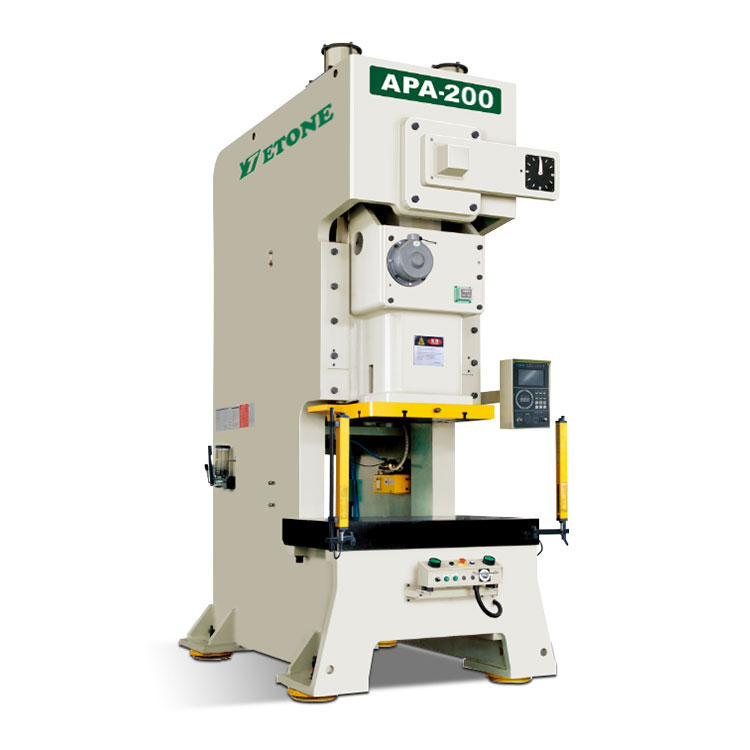Exploring the Applications and Advantages of High Precision Power Presses
2024-07-09
In the realm of manufacturing, the quest for precision and efficiency drives the adoption of advanced machinery. High precision power presses stand out as vital equipment in various industries, delivering exceptional accuracy and productivity. This blog delves into the typical applications where high precision power presses excel and highlights the specific advantages they offer in terms of part quality and production efficiency.
Typical Applications of High Precision Power Presses
1. Automotive Industry
High precision power presses are indispensable in the automotive industry, where parts must meet stringent safety and performance standards. These presses are used to manufacture components such as engine parts, transmission systems, and body panels. The precision of these presses ensures that each part fits perfectly and performs reliably.
2. Electronics and Electrical Components
The electronics industry demands extremely tight tolerances and consistent quality, making high precision power presses a perfect fit. These presses are used to produce connectors, terminals, and various small components that require high accuracy to function correctly in electronic devices.
3. Medical Device Manufacturing
Medical devices require the highest level of precision and reliability. High precision power presses are used to manufacture components for surgical instruments, diagnostic equipment, and implants. The accuracy of these presses ensures that each medical device part meets the strict regulatory standards and performs flawlessly.
4. Aerospace Industry
In aerospace manufacturing, the precision and reliability of parts are critical for safety and performance. High precision power presses are used to produce components such as brackets, fasteners, and structural elements. The ability to maintain tight tolerances ensures that these parts can withstand the demanding conditions of aerospace applications.
5. Consumer Electronics
The production of consumer electronics, such as smartphones, tablets, and wearables, involves intricate components that require high precision. High precision power presses are utilized to manufacture parts like microchips, casings, and connectors, ensuring the devices' functionality and durability.
6. Precision Metalworking
In general precision metalworking, high precision power presses are used for tasks such as stamping, blanking, and forming of intricate metal parts. These applications span various industries, including telecommunications, household appliances, and industrial equipment.
Advantages of High Precision Power Presses in Terms of Part Quality
1. Consistent Part Dimensions
High precision power presses maintain tight tolerances and deliver consistent part dimensions across large production runs. This consistency is crucial in applications where parts must fit together precisely and function seamlessly.
2. Improved Surface Finish
The accuracy of high precision power presses results in superior surface finishes on the produced parts. This is particularly important in industries like electronics and medical devices, where smooth surfaces are essential for functionality and aesthetics.
3. Reduced Defects and Rework
The precision and reliability of high precision power presses significantly reduce the occurrence of defects. This leads to fewer rejected parts and less need for rework, ultimately improving overall product quality and reducing waste.
Advantages of High Precision Power Presses in Terms of Production Efficiency
1. Higher Production Speed
High precision power presses can operate at higher speeds without compromising accuracy. This increased production speed translates to higher output rates, meeting the demands of high-volume manufacturing environments.
2. Enhanced Tool Life
The advanced construction and precision of these presses result in reduced wear and tear on tooling. Longer tool life means less frequent tool changes and maintenance, leading to higher machine uptime and productivity.
3. Optimized Material Utilization
The accuracy of high precision power presses minimizes material waste by ensuring that each part is produced within specified tolerances. This efficient use of materials contributes to cost savings and more sustainable manufacturing practices.
4. Streamlined Production Processes
The reliability and consistency of high precision power presses allow for streamlined production processes. With fewer defects and higher precision, downstream processes such as assembly and quality control become more efficient.
Conclusion
High precision power presses excel in various industries, including automotive, electronics, medical devices, aerospace, and precision metalworking. Their ability to maintain tight tolerances, deliver consistent part dimensions, and operate at high speeds offers significant advantages in terms of part quality and production efficiency. By investing in high precision power presses, manufacturers can achieve superior product quality, reduced defects, higher production speeds, and optimized material utilization, ultimately enhancing their competitiveness in the market.



